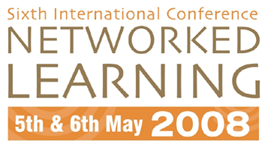

Networked Learning in a Flexible Fully Internet-based International Masters' Course - Possibilities and Limitations
Lotty Larson1, Lotta Antman2
Centre for Educational Development, Lund University1,
Educational Development, Blekinge Institute of Technology2
lotty.larson@ced.lu.se, lotta.antman@bth.se
Petter Pilesjö3
Lund University GIS Centre3
petter.pilesjo@giscentrum.lu.se
Abstract
This qualitative study considers students' experience of learning in the fully internet-based LUMA-GIS programme: Lund University Masters´ programme in Geographical Information Systems (GIS). The introductory course of the LUMA-GIS programme offers online forums for interaction with teachers and fellow students to support a Learning community on-line where networked learning is afforded. Since the course design is flexible there is a choice for students’ whether to communicate with fellow students and/or teachers or work alone. The study is empirical and the research question was approached from a phenomenographic perspective. The main objective of the research was to understand and describe different ways that interaction in online forums promote and support learning. The research was carried out through the lens of the students' experiences of learning in the programme. The results revealed three main categories describing qualitatively different ways that interaction in online forums support learning. The three categories are made sense of in relation to Moore’s theories (1989, 1993) on transactional distance.
The study is empirical and the research question was approached from a phenomenographic perspective. The main objective of the research was to understand and describe different ways that interaction in online forums promote and support learning. The research was carried out through the lens of the students' experiences of learning in this flexible course. The empirical data consists of written answers from 110 LUMA-GIS students. The answers were analysed on a collective level and not as individual reflections.
The results reveal three main categories describing qualitatively different ways that interaction supports learning in this fully internet-based masters’ course. The three categories are called: A. Learning in B .Learning from C. Learning with. Each category gets its distinctive character from the students’ experiences of, and attitudes towards, the flexible context of the course. The three categories are spread out between low and high transactional distance, and reveal different forms of interaction as part of the process of learning. The students have experienced the flexible context of the course in qualitatively different ways, and this in turn seems to have influenced the ways in which they have interacted with tutors and one another in the online forums. It may also have influenced exactly what in the interactions that has been meaningful to them.
The study makes it possible to understand the learning outcome in the three different categories, and to relate this to the need of flexibility of the diverse LUMA-GIS student group. It makes it possible to advice course developers as well as teacher on how to relate the need for networking in relation to flexibility. A possible way of improvement in networking for this heterogeneous student group is also the use of synchronous form of interaction. Examples are different kinds of web 2.0 and social software technology which have potentials to form collaborative spaces for networked learning and reflective interaction. The study is part of the research project Learning in the ICT-Extended University: Experienced context and constituted meaning in ICT-supported outreach initiatives
| About NLC |
2008 Conference Papers
| Conference Committee| Keynote
Speakers
| Papers from previous NL conferences |Research Seminars| Current Conference
| Sponsors | Contact
|
